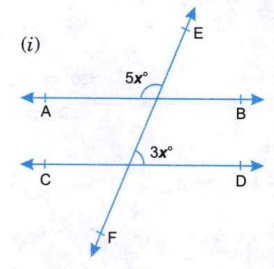In each of the following cases ABCD is a square and PQRS is a rectangle. Find, in each case, the area of the shaded portion. (All measurements are in metre).

The correct Answer is:(i) 3.8m2 (ii) 18.72 sq. m
Step by step video, text & image solution for In each of the following cases ABCD is a square and PQRS is a rectangle. Find, in each case, the area of the shaded portion. (All measurements are in metre). by Maths experts to help you in doubts & scoring excellent marks in Class 8 exams.
Updated on:21/07/2023Topper's Solved these Questions
- AREA OF A TRAPEZIUM AND A POLYGONBOOK - ICSECHAPTER - AREA OF A TRAPEZIUM AND A POLYGONEXERCISE - EXERCISE 20(C )
14 Videos
- AREA OF A TRAPEZIUM AND A POLYGONBOOK - ICSECHAPTER - AREA OF A TRAPEZIUM AND A POLYGONEXERCISE - EXERCISE 20(D)
21 Videos
- AREA OF A TRAPEZIUM AND A POLYGONBOOK - ICSECHAPTER - AREA OF A TRAPEZIUM AND A POLYGONEXERCISE - EXERCISE 20(A)
16 Videos
- ALGEBRAIC EXPRESSIONS BOOK - ICSECHAPTER - ALGEBRAIC EXPRESSIONS EXERCISE - Exercise 11(E)
15 Videos
- CONSTRUCTION (USING RULER AND COMPASSES ONLY)BOOK - ICSECHAPTER - CONSTRUCTION (USING RULER AND COMPASSES ONLY)EXERCISE - EXERCISE 18(D)
10 Videos
Similar Questions
Knowledge Check
In the figure, ABCD is a rectangle. What is the area of the shaded region in the figure?
 A18B20C24D28
A18B20C24D28
In each of the following figures, AB∣∣CD and EF is a transversal. Find the value of x in each case

View SolutionIn each of the following figures, ABCD is a parallelogram

In each case, given above, find the values of x and y
View SolutionIn each of the following figures, ABCD is a parallelogram

In each case, given above, find the values of x and y
View SolutionFind the area of the shaded portion in each of the following diagrams :

View SolutionFind the area of the shaded portion in each of the following diagrams :

View SolutionFind the area of the shaded region in each of the following figure :

View SolutionIn the following figure, a rectangle ABCD encloses three circles. If BC = 14 cm, find the area of the shaded portion. (Take a π=317)

View Solution


